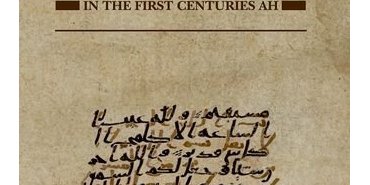Hilali (Asma), The Sanaa Palimpsest : The Transmission of the Qur’an in the First Centuries AH, Oxford, Oxford University Press, ("Qur’anic Studies Series"), 2016, 220 p. ISBN 978-0198793793
L’auteur
Asma Hilali is a Research Associate in the Department of Academic Research and Publications at The Institute of Ismaili Studies. She gained her PhD from l’École Pratique des Hautes Études, Paris. Dr Hilali has worked in various research centres in Germany, France and the United Kingdom. Her main interest is related to the transmission of religious literature in early and mediaeval Islam, and the issues of how religious texts were used and what impact this use had on their forms and contents.
Présentation de l’ouvrage
The Sanaa Palimpsest : The Transmission of the Qur’an in the First Centuries H provides a new annotated edition of the two layers of the ’Sanaa Palimpsest’, one of the oldest Qur’an manuscripts yet discovered. It features a critical introduction that offers new hypotheses concerning the transmission of the Qur’an during the first centuries of Islam. The palimpsest contains two superimposed Qur’anic texts within two layers of writing, on thirty-eight leaves of parchment collectively numbered MS 01.27-1 in the Dar al-Makhtutat, Sanaa, Yemen. The palimpsest’s lower text, which has been dated to the first century of Islam (seventh century CE), was subsequently erased and the parchment was later reused for writing another Qur’anic text, which remains visible in natural light. This upper text is thought to date from the second century of Islam (eighth century CE). The two layers were imaged in 2007 by a French-Italian mission. Both Qur’anic texts are fragmented and present aspects of work in progress. In its lower layer, the manuscript offers the oldest witness of a reading instruction in Qur’an text and perhaps even in any Arabic text. Such peculiarities offer rare evidence as to how the Qur’an was transmitted, taught and written down in the first centuries of Islam. The critical introduction and annotated edition contextualises the volume in the field of Qur’an manuscript studies and Qur’anic studies, and engages with the historical and institutional contexts of transmission of the Qur’anic passages. Asma Hilali also makes systematic reference to previous studies and partial editions of the same manuscript.
Table des matières
Note on Transliteration, Conventions and Abbreviations
SECTION I : Critical Introduction
- 1 : Palimpsests and Sanaa Palimpsest Studies
- 2 : The Sanaa Palimpsest : History and Concepts
- 3 : The Sanaa Palimpsest : The Text and Its Usage
SECTION II : Annotated Edition
- Guide to the Edition
- Edition of the Lower Text
- Edition of the Upper Text
- Endmatter
- Bibliography
- Index of Qur’anic Citations
- General Index

